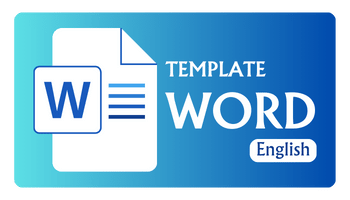The Use of Animated Videos in Preventing Anemia in Adolescent Girls
DOI:
https://doi.org/10.55824/jpm.v4i4.584Keywords:
Teenage girls, anemia, animated, videoAbstract
Anemia is a serious public health problem and has an impact on the life cycle of adolescents, especially adolescent girls. Adolescent girls who suffer from anemia have limitations in the growth process, learning capacity, ability to focus on daily activities, are susceptible to infection, have a tendency to drop out of school, physical fitness levels, and work productivity. The risk of anemia in adolescent girls tends to increase with age and coincides with the teenage years when the growth process occurs most rapidly. The ages between 12 and 15 years, when nutritional needs are very high, are known to have a very high risk of suffering from anemia. One of the educational media that can be easily understood by adolescents is animated videos. The purpose of this community service is to increase knowledge about preventing anemia in adolescents. The activities carried out are in the form of education, using educational videos to prevent anemia in adolescents. The method used is socialization and health education to adolescent girls through videos and explanations of the consumption of iron tablets distributed to all adolescent girls. The location of the activity was carried out at SDN 001 Nongsa. The stages of the activity include the stages of preparation, implementation and reporting. Data from the results of community service activities showed an increase in the capacity of adolescent girls, showing a change of 22 points in the pre-post test education, HB level examination from 30 people. The examined adolescent girls who experienced anemia were 16 people (53%) and 14 people did not experience anemia. All adolescents showed high enthusiasm for this activity and hoped that anemia and nutritional status education activities could be carried out sustainably to improve the fitness and health of adolescent girls.
References
Amaliya, N. Z., Husaini, A. and Mirsiyanto, E. (2022) ‘Faktor-Faktor Yang Berhubungan Dengan Kejadian Anemia Pada Remaja Putri Di SMPN 22 Kota Jambi Tahun 2022’, Jurnal Kesehatan Masyarakat Mulawarman, 4(2), pp. 1–8.
Atik, N. S., Susilowati, E. and Kristinawati (2022) ‘Gambaran Kadar Hemoglobin pada Remaja Putri di SMK Wilayah Dataran Tinggi’, Jurnal Indonesia Kebidanan, 6(2), pp. 61–68. Available at: http://ejr.stikesmuhkudus.ac.id/index.php/ijb/article/view/1731/1033.
Janah, M. and Ningsih, S. (2021) ‘The Correlation Between Nutritional Status with the Incidence of Anemia in Adolescent Girls’, IJMS-Indonesian Journal On Medical Science, 8(1), pp. 39–44.
Julianawati, T. et al. (2023) ‘Pengaruh Pemberian Cookies Bit Terhadap Kenaikan Kadar Hb Remaja Putri’, Promotif Preventif, 6(5), pp. 741–745.
Nisman, W. A. et al. (2024) ‘Pengaruh Edukasi dengan Video Terhadap Pengetahuan, Sikap, dan Kecemasan dalam Pencegahan Covid-19’, Jurnal Keperawatan Klinis dan Komunitas (Clinical and Community Nursing Journal), 8(1), p. 27. doi: 10.22146/jkkk.93849.
Nurul Arifin, A. S., Handayani, R. and Handayani, Y. (2024) ‘Hubungan Anemia dan Prestasi Belajar Pada Remaja Putri’, Jurnal Kebidanan Malakbi, 5(2), p. 78. doi: 10.33490/b.v5i2.1366.
Permatasari, A. and Suciati, S. (2022) ‘Edukasi Perbaikan Pola Makan Remaja Putri Sebagai Upaya Dini Pencegahan Stunting’, Prosiding Seminar Nasional Program Pengabdian Masyarakat, 4(3 SE-), pp. 917–924. doi: 10.18196/ppm.43.612.
Setyaningrum, Y. I., Wulandari, I. and Purwanza, S. W. (2023) ‘Literatur Review Penyebab dan Upaya Pencegahan Anemia pada Remaja Putri’, Journal of Noncommunicable Diseases, 3(2), p. 84. doi: 10.52365/jond.v3i2.858.
Yunita, F. A. et al. (2020) ‘The Relationship Between The Level Of Knowledge Of Teenagers (Girl) About Iron Consumption With The Incidence Of Anemia In SMP 18 Surakarta’, PLACENTUM Jurnal Ilmiah Kesehatan dan Aplikasinya, 8(1), p. 2020.
Downloads
Published
Issue
Section
License
Penulis yang menerbitkan jurnal ini menyetujui persyaratan berikut:
- Hak cipta atas artikel apa pun dipegang oleh penulisnya.
- Penulis memberikan jurnal, hak publikasi pertama dengan karya yang dilisensikan secara bersamaan di bawah Lisensi Atribusi Creative Commons yang memungkinkan orang lain untuk membagikan karya dengan pengakuan atas kepenulisan dan publikasi awal karya tersebut dalam jurnal ini.
- Penulis dapat membuat pengaturan kontrak tambahan yang terpisah untuk distribusi non-eksklusif dari versi jurnal yang diterbitkan dari karya tersebut (misalnya, mempostingnya ke repositori institusional atau menerbitkannya dalam sebuah buku), dengan pengakuan dari publikasi awalnya di jurnal ini.
- Penulis diizinkan dan didorong untuk memposting karya mereka secara online (misalnya, di repositori institusional atau di situs web mereka) sebelum dan selama proses pengiriman, karena hal itu dapat mengarah pada pertukaran yang produktif, serta kutipan yang lebih awal dan lebih besar dari karya yang diterbitkan.
- Artikel dan materi terkait yang diterbitkan didistribusikan di bawah Lisensi Internasional Creative Commons Attribution-ShareAlike 4.0








